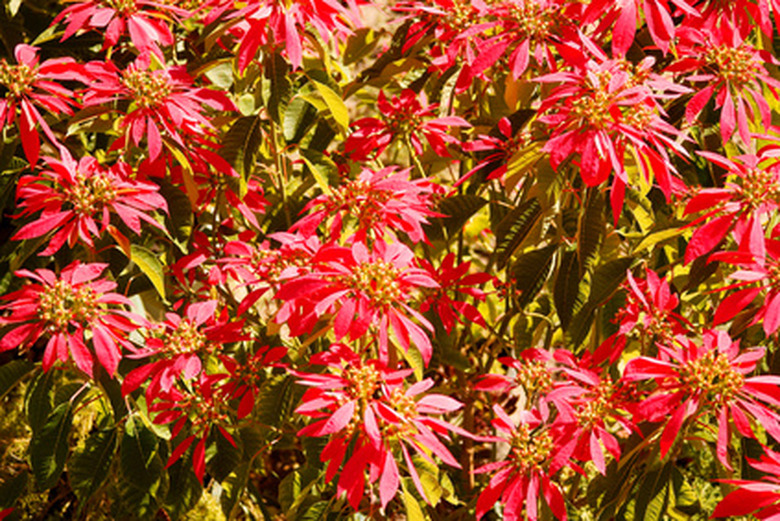Care Of The Plant Caesalpinia Pulcherrima
The Caesalpinia pulcherrima is a gorgeous perennial that thrives in warm climates or even the desert. It can also survive a yearly freeze. Also known as the red bird of paradise, or the pride of Barbados, this tropical plant can reach heights of up to 15 feet. A member of the pea family (Fabaceae), the species name pulcherrima translates to mean "very pretty." Its flower has five petals with a red, six-inch-long stamen. Perfect for USDA zones 8-11, it is very tolerant of drought conditions.
Step 1
Plant your caesalpinia pulcherrima six feet apart in an area that will receive full sun, although a little shade is well tolerated. Test your soil to make sure there are at least light amounts of alkaline present. The plant will grow well in salty conditions with well-drained soil.
- The Caesalpinia pulcherrima is a gorgeous perennial that thrives in warm climates or even the desert.
Step 2
Fertilize your plant with any general type fertilizer as needed, usually one time per month. However, once this plant is well established fertilizer will not be needed.
Step 3
Water the plant enough to provide slightly moist soil. Although they are drought tolerant, this is only after the plant has reached full maturity. You will only need to do this occasionally if your area averages light rainfall. Do not saturate full grown plants with too much water.
Step 4
Prune the plant anytime necessary to maintain desired proportions. In November of each year, cut the plant all the way to the ground. Not doing this may cause plant overgrowth when it returns in the spring.
- Fertilize your plant with any general type fertilizer as needed, usually one time per month.
- Not doing this may cause plant overgrowth when it returns in the spring.
Tip
If you want to expand the caesalpinia pulcherrima in your garden, simply pick up loose seedlings that drop from the bush and put into a brown paper bag in a cool dark location until you are ready to plant in the spring. You can also find a secondary leaf stem that contains seedlings. Place these pods in a dark place as well and allow to dry out and pop open, which will reveal the seed. This plant can survive low temperatures. The leaves will do well until the temperature dips to 30 degrees and the root system can survive to 15 degrees of ground temperature. If you have an unusually cold winter, the plant may be slower to return in the spring.
Warning
The Caesalpinia pulcherrima seeds are toxic. Keep away from children and pets!
